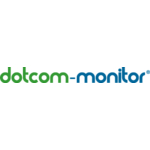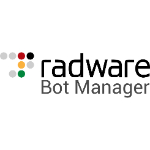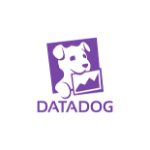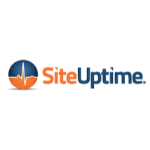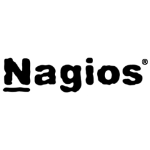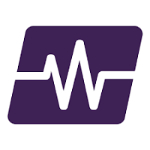TechnologyCounter provides genuine, unbiased real user reviews to help buyers make informed decisions. We may earn a referral fee when you purchase through our links, at no extra cost to you.
List of 15 Best Website Monitoring Software
Showing 1 - 15 of 74 productsManageEngine Site24x7 is a SaaS-based, AI-powered observability platform for DevOps and IT operations. The cloud-based platform’s broad capabilities help predict, analyze, and troubleshoot problems with end-user experience, applications, microservi...Read ManageEngine Site24x7 Reviews
Dotcom-Monitor is a leading provider of website monitoring and performance testing solutions. With a focus on continuous improvements data, Dotcom-Monitor helps businesses of all sizes optimize their online presence and ensure a smooth and seamless e...Read Dotcom-Monitor Reviews
Upgrade your application processing system by utilizing the dynamic and efficient application monitoring software, ManageEngine Applications Manager, which eliminates manual tasks such as application upload, information verification, and service del...Read ManageEngine Applications Manager Reviews
Time Doctor is a productivity and time tracking software designed to help individuals and businesses stay organized is a . With its user-friendly interface features, Time Doctor simplifies time management and boosts productivity, making it a must-hav...Read Time Doctor Reviews
Radware Bot Manager an innovative software designed to protect your website from malicious bot attacks. With advanced features and intelligent detection techniques, Bot Manager ensures the security and reliability of your online platform. Say goodbye...Read Radware Bot Manager Reviews
Datadog APM is a tool designed to help businesses monitor and optimize their application performance. With its advanced features and user-friendly interface, Datadog APM makes it easy for companies to gain valuable insights into their application hea...Read Datadog APM Reviews
Uptrends is the leading solution for website and server monitoring, empowering businesses to stay on top of their online performance. With its advanced technology interface, Uptrends makes it easy to track, analyze, and optimize website performance,...Read Uptrends Reviews
Pingdom is a leading website monitoring tool that helps businesses and individuals ensure their online presence is up and running at all times. With its powerful features and user-friendly interface, Pingdom allows users to track website performance,...Read Pingdom Reviews
SiteUptime is a website monitoring tool that helps businesses and individuals ensure their online presence remains up and running at all times. With its user-friendly interface features, SiteUptime is one of the top choices for reliable website monit...Read SiteUptime Reviews
Visitor Queue is a solution for tracking website visitors and turning them into potential leads. With its advanced analytics and visitor identification technology, Visitor Queue provides valuable insights and helps businesses prioritize their sales e...Read Visitor Queue Reviews
AppTrana is a cybersecurity software that offers robust protection for websites, web applications, and APIs. With its advanced features and unparalleled functionality, AppTrana is dedicated to safeguarding your digital assets from online threats and...Read AppTrana Reviews
BlogVault - Your Ultimate Backup and Security Solution for WordPress. Say goodbye to the stress and worries of losing your valuable data or falling prey to cyber attacks. With BlogVault, you can rest assured that your website is safe and secure with...Read BlogVault Reviews
Nagios, a powerful monitoring and alerting software, helps businesses ensure the smooth is a functioning of their IT infrastructure. With its advanced features and user-friendly interface, Nagios allows for real-time tracking and troubleshooting of n...Read Nagios Reviews
Opsview is a powerful, all-in-one monitoring solution designed to keep your systems running smoothly. With Opsview, you can easily track the health and performance of your IT infrastructure, ensuring maximum uptime and efficiency. Say goodbye to tedi...Read opsview Reviews
AlertBot, is a solution to proactively monitor your websites uptime and functionality. With its advanced technology interface, AlertBot is the go-to tool for detecting and resolving website issues before they affect your business. Say goodbye to unex...Read AlertBot Reviews
- What Is Website Monitoring Software?
- Top Reasons Why Businesses Need Website Monitoring Software?
- What Are the Top Key Features of Website Monitoring Software?
- What Are the Top Benefits of Website Monitoring Software?
- What Are the Steps to Choose the Right Website Monitoring Software?
- What Are the Types of Website Monitoring Software for Different Industries?
- What Are the Technology Trends for Best Website Monitoring Software?
- What Are the Deployment Options for Website Monitoring Software?
What Is Website Monitoring Software?
Website monitoring software is a software program designed to monitor and assess the performance and availability of websites and online services. The webpage monitoring tool periodically monitors the availability, page loading speed, latency, and various other performance parameters of a website or application.
The best website monitoring tools facilitate the identification of defects and mistakes, performance tracking, and the prevention of unforeseen downtimes for web developers, IT experts, and enterprises. Site monitoring tools are designed to give messages when specific performance requirements are not satisfied.
Webmasters may receive an alert in the event of a delayed page load or other server-related issues. The web page monitoring software is designed to gather and retain data, enabling organizations to do comprehensive analyses of their website or application's performance across various time periods.
The utilization of website monitoring software enables the detection of potential site difficulties in advance, mitigating the likelihood of them escalating into significant problems. Additionally, it guarantees optimal performance of the website by ensuring its seamless operation.
Top Reasons Why Businesses Need Website Monitoring Software?
1. Automated uptime monitoring: Website monitoring software possesses the capability to monitor the operational status of a website and promptly notify users in the event of website unavailability or inaccessibility.
2. Detect performance issues and failures: The utilization of website monitoring software enables the detection of declines in availability, significant alterations in response times, and the identification of any instances of failure or performance-related concerns.
3. Track and alert of suspicious behavior and cybersecurity threats: Website monitoring technologies have the capability to identify and detect potentially malicious traffic patterns, thereby enabling users to proactively mitigate developing cybersecurity risks.
4. Integration with third-party applications and services: Web page monitoring tools have the capability to establish integration with external applications and services, thereby enabling customers to derive advantages from additional services like application performance monitoring (APM).
5. Monitor server and application performance: The utilization of the best website monitoring tools facilitates the monitoring of server and application performance data, hence providing users with the ability to comprehend the fundamental reasons behind performance difficulties.
6. Analyze user experience: Top website monitoring tools are capable of assisting users in identifying user experience issues through the monitoring and analysis of various metrics such as page loading times, click pathways and overall responsiveness of the website.
7. Optimize page elements: Web page monitoring software is beneficial for users as it facilitates the analysis of specific page elements and their influence on user experience. This analysis enables users to adjust these parts accordingly.
8. Monitor server configurations: Site monitoring tools are utilized for the purpose of monitoring server configurations, hence assuring the appropriate and secure configuration of the website.
9. Automate maintenance tasks: The website monitoring tools provide the capability to automate specific maintenance chores, like log monitoring and health checks. This automation feature allows users to allocate their time towards other significant duties, hence enhancing productivity and efficiency.
10. Track server and application health: Website monitoring solutions provide the capability to monitor the health of servers and applications, thereby offering consumers up-to-date data regarding the functioning of their websites.
11. Monitor divide failures: Site monitoring tools are capable of detecting several types of failures, including internal server faults and broken pages.
12. Monitor third-party services: Web page monitoring tools are beneficial for users as they enable the monitoring of third-party services, including payment gateways, to ensure their optimal functionality and minimize any instances of service interruption.
13. Generate reports and analytics: The best website monitoring tools have the capability to provide comprehensive reports and analytics, thereby enabling users to acquire enhanced insights into the performance of their websites.
14. Monitor SSL certificates: The utilization of top website monitoring tools enables users to effectively monitor the expiration dates of their SSL certificates, thereby ensuring the maintenance of a secure environment for the data of their website visitors.
15. Monitor DNS changes: Website monitoring solutions are capable of assisting users in monitoring DNS changes, detecting any harmful activity, and ensuring the website remains current.
What Are the Top Key Features of Website Monitoring Software?
1. Real-Time Monitoring of Uptime and Downtime: The utilization of website monitoring software enables the user to effectively monitor the functioning of a website in real-time. This capability allows for the prompt identification and resolution of any potential instances of website unavailability, hence mitigating the impact on consumers or visitors.
2. Server Availability Monitoring: Web page monitoring tools has the capability to monitor and assess the operational status of the server that hosts a given website. The system has the capability to deliver messages to website owners and administrators on instances of server downtime.
3. IPv4/IPv6 Status Monitoring: The utilization of web page monitoring software enables the identification and notification of any faults pertaining to the utilization of both IPv4 and IPv6 addresses, thereby guaranteeing the continuous and accurate functioning of the website in accordance with the appropriate protocol.
4. Speed and Performance Monitoring: Site monitoring tools has the capability to evaluate the speed and performance of a website across all types of connections. This enables the user to monitor and identify performance issues in different geographical locations, and afterwards take corrective measures to address them.
5. Network & Server Bandwidth Monitoring: The utilization of the best website monitoring software enables the monitoring of the server's bandwidth consumption, thereby assessing its influence on website performance and user experience.
6. Transaction Monitoring: Web page monitoring tools has the capability to replicate user actions on a website and evaluate the time it takes for important transactions to occur. This functionality enables the identification of anomalies and bottlenecks within the website's performance.
7. Alerts: Webpage monitoring tool has the capability to be configured in such a way that it can dispatch notifications in the event of any form of disturbance occurring on the website.
8. Automated Reports: Site monitoring tools have the capability to generate automated reports that monitor and evaluate the performance and availability of a website. These reports can be utilized for subsequent study and comparison with established standards.
9. Scalability: The scalability of web page monitoring software can be adjusted according to the size and traffic of a website.
10. Integration with Third-Party Tools: The seamless integration of website monitoring software with external tools such as Customer Relationship Management (CRM) systems and analytics software is readily achievable.
What Are the Top Benefits of Website Monitoring Software?
1. Increased website uptime: Website monitoring software plays a crucial role in maintaining the continuous functionality of a website, hence guaranteeing uninterrupted access for clients.
2. Improved customer experience: Site monitoring tools enables web managers to promptly discover and rectify any issues, hence enhancing user experience and satisfaction.
3. Faster response to incidents: Top website monitoring tools facilitate prompt notification to web administrators on any anomalies, hence enabling expeditious action and effective resolution of problems.
4. Cost savings: The implementation of site monitoring software can effectively mitigate expenses related to website downtime and other complications, while also minimizing the resources necessary for issue identification and resolution.
5. Detailed reports: The best website monitoring software offers comprehensive reports on website performance, facilitating the identification and resolution of underlying issues for administrators.
6. Improved security: Web page monitoring tools has the capability to detect harmful actions and enhance security measures by closely monitoring website traffic and activities.
What Are the Steps to Choose the Right Website Monitoring Software?
1. Define the Goals: First and foremost, it is imperative to have a clear and concise delineation of the objectives pertaining to the best website monitoring software.
What precise objectives do you want for the monitoring software to achieve? An illustrative instance of an objective might involve monitoring and assessing client interaction and involvement with the website.
2. Assess Your Needs: One should take into account the characteristics of the best website monitoring tools required to achieve their objectives. Consider the diverse facets associated with the practice of website monitoring, encompassing uptime monitoring, performance monitoring, automatic alerting, and data visualization.
3. Research Available Options: Conduct an examination of the various webpage monitoring tool options for website monitoring. This analysis will undertake a comparison of costs, features, and customer support.
4. Assess Ease of Installation: One should contemplate the ease and expediency with which the web page monitoring software can be installed. It is imperative to ensure that the software being utilized is compatible with the web server that is currently in use.
5. Evaluate User Experience: It is imperative to allocate sufficient time for the evaluation of the software's user experience. Conduct a comprehensive evaluation of the features and user-friendliness to ascertain its alignment with your requirements.
6. Read Online Reviews: Conduct an investigation into the internet evaluations pertaining to the top website monitoring tools designed for website monitoring. It is advisable to allocate sufficient time to peruse both favorable and unfavorable evaluations.
7. Make Your Selection: After carefully evaluating all relevant criteria, it is advisable to make a decision regarding the website monitoring software that most effectively aligns with your specific requirements.
What Are the Types of Website Monitoring Software for Different Industries?
There are many types of website monitoring software for different industries. Examples include:
1. E-commerce Monitoring Software – The e-commerce site monitoring software is designed to assess the operational efficiency of e-commerce websites, including a range of metrics like customer experience, page loading speed, website availability, and transaction processing duration, among others.
2. Network Monitoring Software – Network monitoring software provides enterprises with a thorough assessment of their network's performance, encompassing metrics such as latency, uptime, errors, and packet loss.
3. Security Monitoring Software – The purpose of security monitoring software is to detect potentially dangerous activity occurring on websites and networks. This software records and logs such activity in order to promptly notify organizations of any malicious threats that may be present.
4. Application Monitoring Software – The top website monitoring tools are designed to oversee and assess the operational efficiency of web applications, including customer management systems, CRM platforms, and e-commerce shopping carts, with the purpose of identifying and addressing any potential performance deficiencies or downtime occurrences.
5. Server Monitoring Software – Server monitoring software is designed to observe and assess the operational efficiency of server resources, encompassing crucial aspects such as CPU use, memory allocation, disk utilization, and network activity.
6. Website UX Monitoring Software – Website user experience (UX) monitoring software enables organizations to monitor several metrics related to user engagement on their websites. These metrics include user attention span, scroll depth, clickthrough rates, page abandonment rates, and bounce rates.
What Are the Technology Trends for Best Website Monitoring Software?
The technology advances pertaining to the best website monitoring software exhibit variability, with the most crucial ones encompassing:
1. Automation: The implementation of automated webpage monitoring tool can effectively minimize the resources and labor required for assessing the performance of a website, thereby enabling businesses to efficiently administer their online platforms.
2. Comprehensive Insight: The utilization of software solutions that have comprehensive reporting and analytics capabilities can enhance the level of visibility into the performance of websites, facilitating the identification of bugs and other technical difficulties in a more efficient manner, hence mitigating the likelihood of these issues escalating into significant problems.
3. Server Accessibility: Numerous site monitoring software provide the capability to access their dedicated servers, hence facilitating the monitoring of website performance and enhancing consumers' ability to swiftly access their respective websites.
4. Cross-Platform Compatability: Contemporary website monitoring solutions have been developed to be compatible with both desktop and mobile devices, enabling businesses to conveniently monitor their websites while on the move.
5. Support For Multiple Language Versions: Multinational corporations frequently encounter the necessity of monitoring their websites across several linguistic contexts. The best website monitoring tools offer support for several languages and scripts, hence facilitating the monitoring process.
What Are the Deployment Options for Website Monitoring Software?
The available deployment choices for website monitoring software are contingent upon the specific application being considered. However, they often encompass a range of possibilities.
1. Cloud-hosted: The utilization of cloud-based hosting allows for the storage of all data pertaining to web page monitoring tools in an external environment.
This alternative provides the opportunity for continuous surveillance without necessitating the allocation of hardware and staff assets towards the administration of an on-site server.
2. Self-hosted/on-premise: In this scenario, the site monitoring software is implemented either on a server located within the local network or on a hosted environment.
This feature offers businesses an increased level of authority over both the data and the hardware infrastructure on which the program operates. Nevertheless, the management and maintenance of this system necessitate additional resources.
3. Hybrid: Hybrid deployments enable enterprises to implement software in a dual environment, comprising both cloud-hosted and locally-hosted infrastructures, contingent upon specific criteria.
This enables enterprises to customize their website monitoring software to align with their unique infrastructure and specific requirements.

